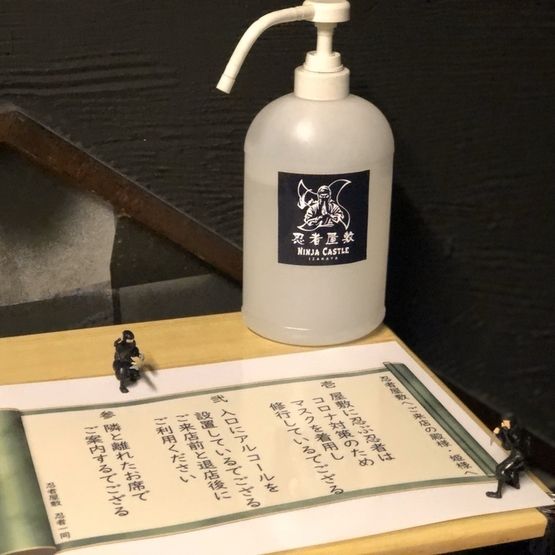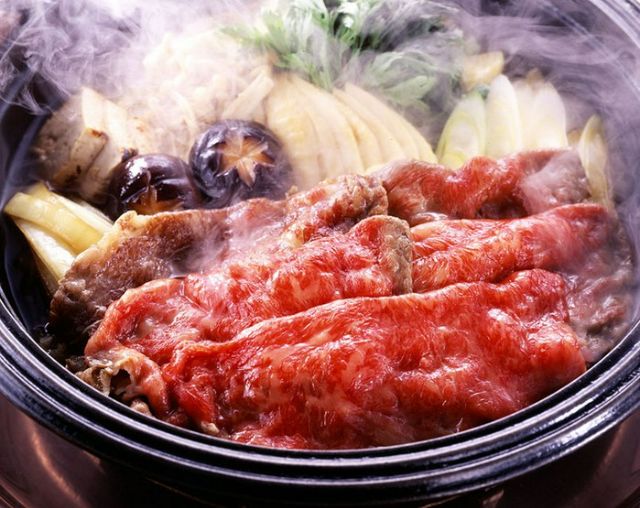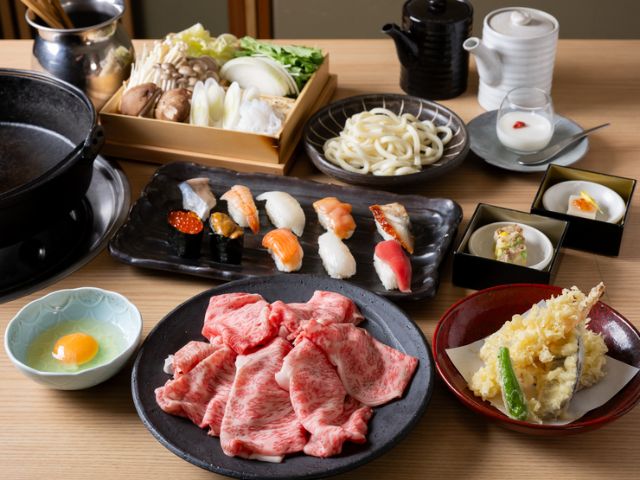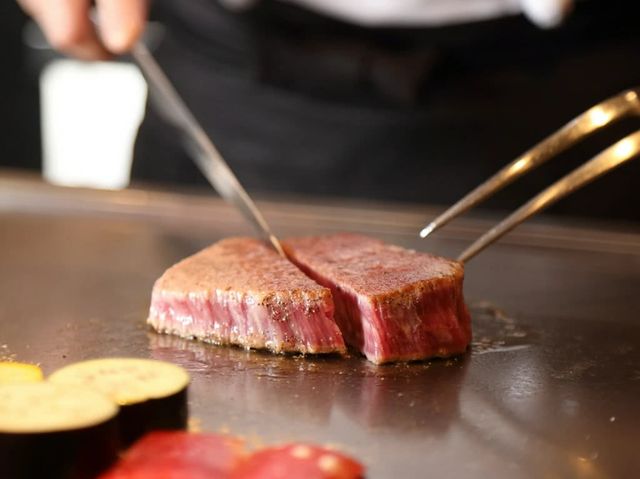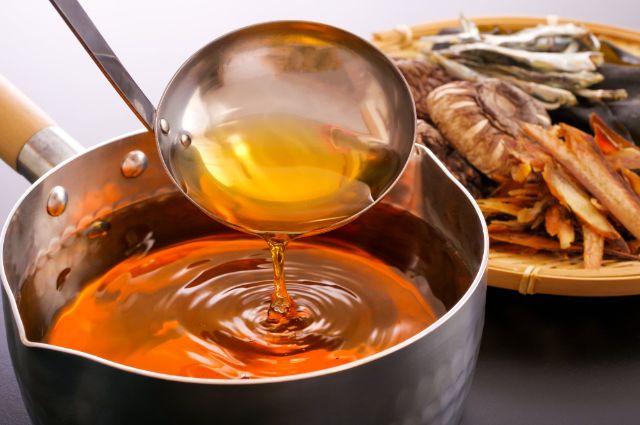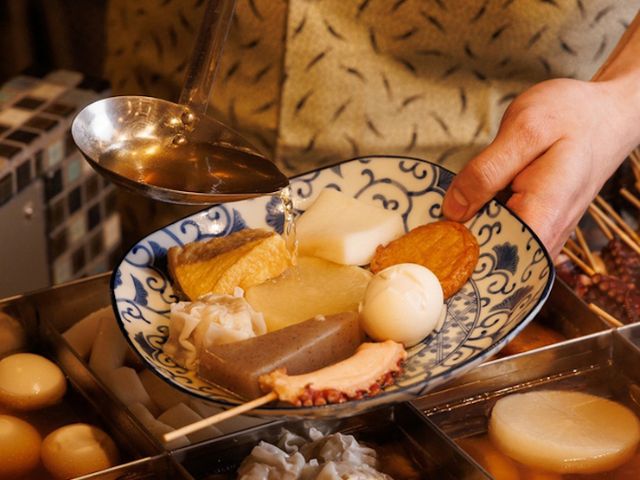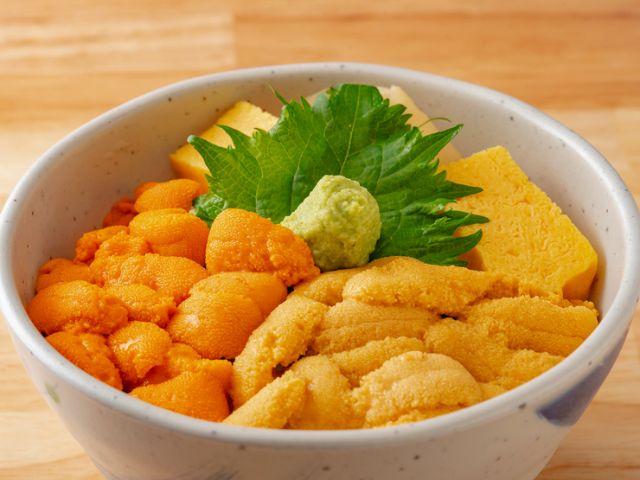Looks Simple yet tastes Exquisite! Get to know the Charms of Tempura

What Is Tempura?
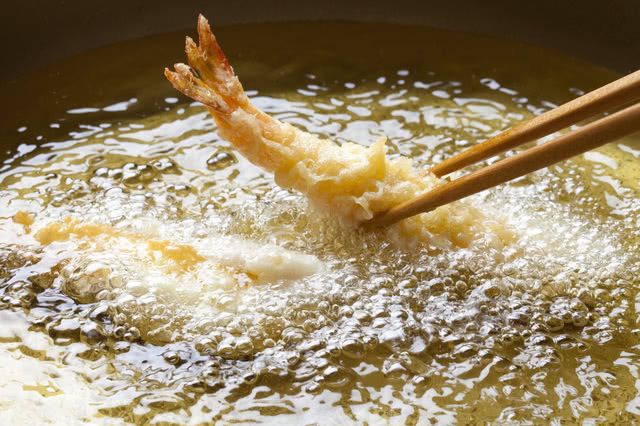
Some of the ingredients commonly used when making tempura are seafood such as shrimp, squid, and kisu (sillago), as well as vegetables such as sweet potato, lotus root, eggplant, and pumpkin.
Preparing it is quite simple, as all you have to do is dip the ingredients in the batter and fry them in vegetable oil heated to 160 - 180℃! However, it is important to note that while it looks easy, it is quite difficult to get that perfect crispy texture!
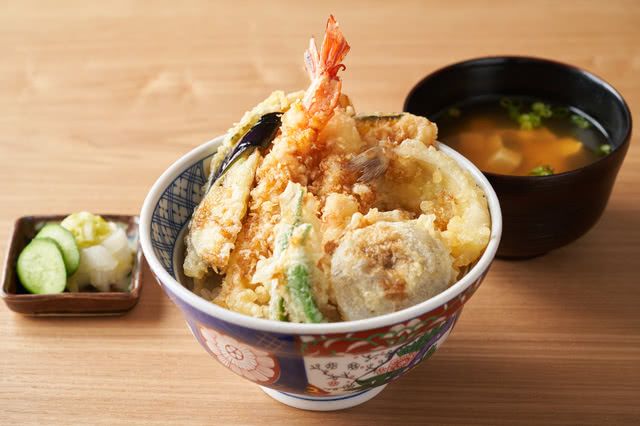
One of the charms of tempura is that you can have it many different ways. You can place it atop rice and serve it as tendon (rice bowl dish with tempura), mix matcha (green tea) or green dried seaweed into the batter, or put other seasonings such as matcha or sansho (stong Japanese pepper) into the dipping salt to add flavor. Make sure to try various tempura dishes when you visit Japan!
It's not originally a Japanese Dish?! The History of Tempura
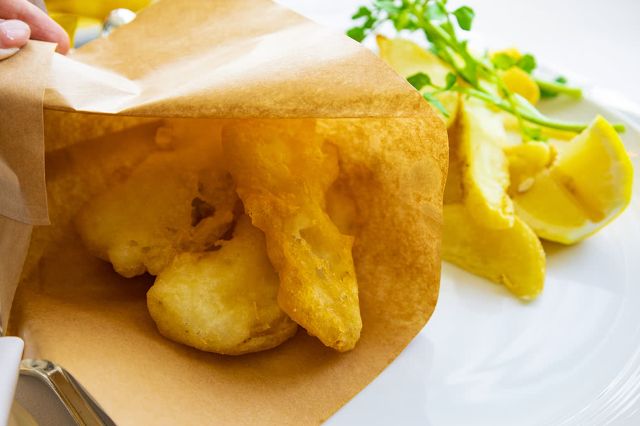
It is said that tempura came from fritters (vegetables and fish coated in flavored batter and then deep fried) that were brought to Japan from Portugal in the mid-16th century.
There is a theory that its name comes from the Portuguese word "temporas," which are "ember days" that occur each season.
Meat consumption is prohibited during temporas, so it is said that fritter-like dishes were eaten instead, and these became the origin of tempura.
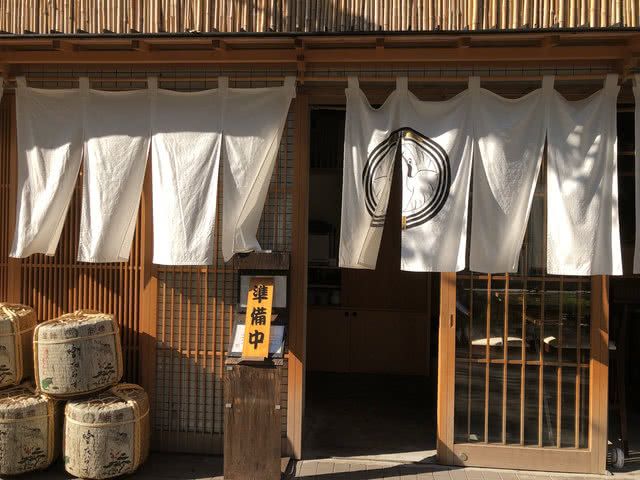
It wasn't until the 17th century, when oil production in the country increased, that tempura became more common among the masses. Around that time, standing food stalls mushroomed in Edo (modern-day Tokyo), and freshly-fried skewered tempura became popular as a light meal.
In fact, tempura could only be eaten at food stalls during those days to prevent fires!
By the turn of the 19th century, traditional Japanese restaurants and tempura specialty stores emerged, establishing tempura as a high-class dish.
When the Great Kanto Earthquake hit in 1923, chefs and cooks who lost their jobs moved to various parts of Japan, and their exodus led to the spread of tempura throughout the country.
This is also how tempura evolved into an everyday dish that people could easily eat even at home, removing the monopoly that traditional Japanese restaurants had. Tempura has become one of Japan's most well-known dishes around the world.
Why is Tempura considered a High-Class dish?
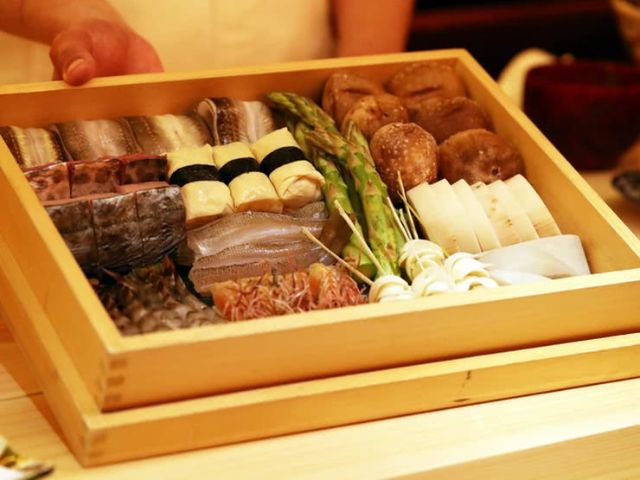
The reason is that chefs need to have extensive experience and expert culinary skills to be able to make delicious tempura.
And because of how simple it is to make tempura, its taste depends on the ingredients chosen and how they are fried. There are many things that chefs have to pay close attention to when making tempura. It is crucial to have a discerning eye for fresh ingredients and the pre-cooking preparation skills to make them even more delicious. You also have to pay close attention to the freshness of the oil used for frying, how to coat the ingredients in batter, and the frying time.
In addition, since tempura is best eaten straight out of the frying pot, it is often fried one by one, which takes time and effort.
Chefs need to be meticulous about everything that has to do with tempura, from the ingredients to the cooking method. Hence, its distinction from home-cooked food has led to its reputation as a high-class dish.
Kichiji Kanizo (Naka-Meguro)
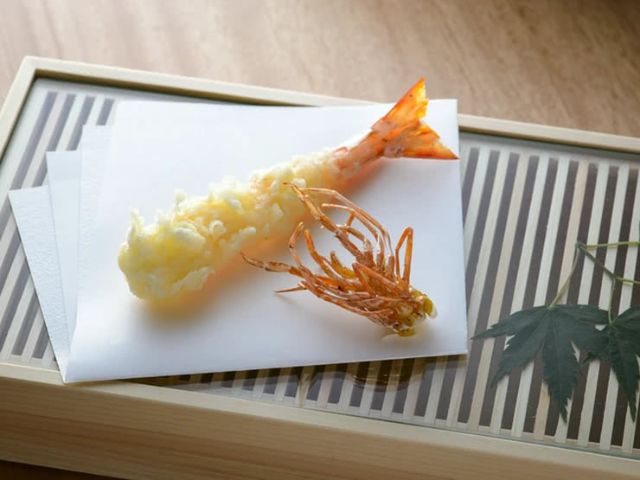
The interior of this restaurant is a bright space with muted tones, creating an atmosphere that makes it feel like a hideout for adults.
There are only two courses to choose from: the Tempura Course (13,200 JPY) and the Tempura Course + Hairy Crab and Daikon Radish Pot (16,500 JPY)!

Here, the shrimp tempura is especially recommended! The contrast between the taste and texture of the crunchy and fragrant head and the sweet and plump meat will surely get you hooked.
Kichiji Kanizo
Closed: Irregular
Average price: -
Access: 116m from Nakameguro Station
Address: 3F-B, Plage Meguro, 3-9-5, Kamimeguro, Meguro-ku, Tokyo Map
More Details Reservation
Tempura Miyashiro (Naka-Meguro)
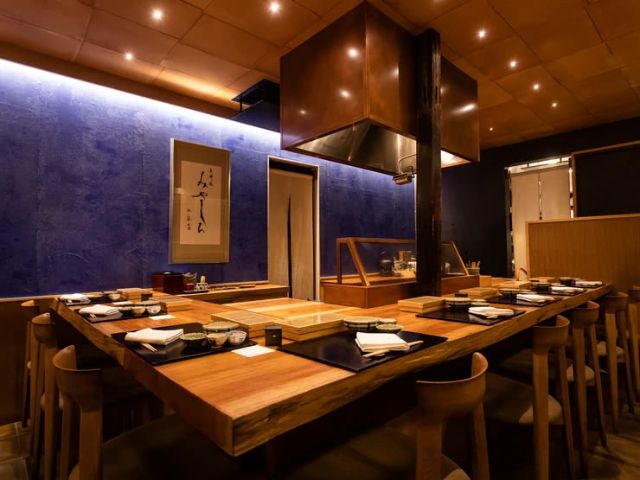
Found in a 100-year-old traditional Japanese house, this restaurant has no signboard, so it feels like a hideaway.
The interior of the restaurant is decorated with Japanese paper, creating a calm atmosphere.
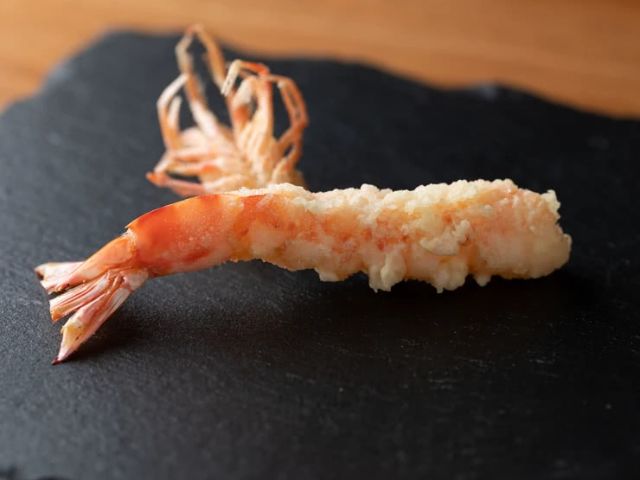
The Omakase Dinner Course (25,300 JPY) incorporates not only tempura, but also seasonal soup, sashimi, and other dishes, offering a lineup you will not tire of.
Tempura Miyashiro
Closed: Monday
Average price: [Dinner] 18,000 JPY / [Lunch] 18,000 JPY
Access: 3-minute walk from Nakameguro Station on Tokyo Metro Hibiya Line and Tokyu Toyoko Line
Address: 1F, 2-18-11, Kamimeguro, Meguro-ku, Tokyo Map
More Details Reservation
Disclaimer: All information is accurate at time of publication.
Thank you for reading our article.
Our goal is to take your culinary journey to the next level by helping you find the best restaurant. With SAVOR JAPAN, you can search and make reservations for
the Tempura restaurants found in and around Tokyo that fill your needs.
Discover more Tempura restaurants by area
- Tokyo Area
- Near Tokyo
- Kyoto and Osaka Area
- Hokkaido Area
- Northern Honshu (Tohoku)
- Central Honshu (Chubu)
- Western Honshu (Chugoku)
- Shikoku
- Kyushu
- Okinawa and Ryukyu Islands
Discover more restaurants to eat Japanese Cuisine by area
Keywords
Related Articles
New Articles
Categories
Cuisine
- Bars (23)
-
Japanese Cuisine (675)
- Kaiseki (46)
- Nabe (19)
- Okonomiyaki (23)
- Shabu Shabu (36)
- Soba (17)
- Sushi (137)
- Tempura (18)
- Teppanyaki (46)
- Shojin Ryori (3)
- Tonkatsu (12)
- Kushiyaki (10)
- Yakitori (45)
- Sukiyaki (35)
- Japanese Cuisine (341)
- Oyster (2)
- Sashimi/ Seafood (19)
- Unagi (eel) (30)
- Motsu Nabe (offal hotpot) (6)
- Mizutaki (chicken hot pot) (3)
- Oden (8)
- Kaisendon (seafood bowl) (9)
- Udon (2)
- Taverns(Izakaya) Cuisine (124)
- Western Cuisine (42)
- Italian/French Cuisine (95)
- Yakiniku/Steak (223)
- Chinese Cuisine (26)
- Ramen (Noodles) Cuisine (26)
- Cafe/Sweets (60)
- Other Asian Cuisine (5)
- Global/International Cuisine (7)
- Alcohol (45)
- Other (11)
Area
- Shikoku (10)
- Kyoto and Osaka (344)
-
Tokyo (460)
- Tokyo (286)
- Ginza (44)
- Roppongi (22)
- Shibuya (26)
- Shinjuku (47)
- Asakusa (20)
- Ebisu (12)
- Tsukiji (10)
- Tokyo Landmarks (4)
- Ueno (24)
- Akihabara (9)
- Ikebukuro (12)
- Jiyugaoka, Denenchofu, Nakameguro (9)
- Shimokitazawa (4)
- Kichijoji (3)
- Tachikawa (1)
- Omotesando, Harajuku, Aoyama (18)
- Akabane (1)
- Kagurazaka (4)
- Akasaka (10)
- Odaiba (1)
- Tsukishima, Harumi, Toyosu (3)
- Near Tokyo (100)
- Okinawa and Ryukyu Islands (58)
- Hokkaido (124)
- Northern Honshu (Tohoku) (31)
- Central Honshu (Chubu) (144)
- Western Honshu (Chugoku) (32)
- Kyushu (92)
Archives
- December 2025(8)
- November 2025(4)
- October 2025(3)
- September 2025(6)
- August 2025(11)
- July 2025(19)
- June 2025(18)
- May 2025(34)
- April 2025(43)
- March 2025(30)
- February 2025(36)
- January 2025(26)
- December 2024(69)
- November 2024(31)
- October 2024(15)
- September 2024(39)
- August 2024(65)
- July 2024(31)
- June 2024(54)
- May 2024(61)
- April 2024(28)
- March 2024(31)
- February 2024(42)
- January 2024(32)
- December 2023(20)
- November 2023(5)
- October 2023(11)
- September 2023(7)
- August 2023(18)
- July 2023(8)
- June 2023(8)
- May 2023(18)
- April 2023(15)
- March 2023(1)
- January 2023(1)
- April 2022(2)
- March 2022(2)
- February 2022(1)
- January 2022(1)
- July 2021(1)
- March 2021(1)
- February 2021(1)
- December 2020(1)
- October 2020(1)
- September 2020(2)
- August 2020(10)
- July 2020(6)
- June 2020(9)
- May 2020(11)
- April 2020(8)
- March 2020(8)
- February 2020(13)
- January 2020(9)
- December 2019(24)
- November 2019(8)
- August 2019(14)
- July 2019(15)
- June 2019(18)
- May 2019(17)
- April 2019(16)
- March 2019(22)
- February 2019(22)
- January 2019(26)
- December 2018(34)
- November 2018(40)
- October 2018(32)
- September 2018(11)
- August 2018(8)
- July 2018(6)
- June 2018(9)
- May 2018(10)
- April 2018(21)
- March 2018(74)
- February 2018(39)
- January 2018(26)
- December 2017(60)
Keywords
- Omakase
- Accessible
- Affordable
- All-You-Can-Eat
- Amazing Scenery
- anime
- Art
- Autumn
- Awards
- Beer Gardens
- Breakfast
- Chef Recommendations
- Cherry Blossoms
- Chinese
- Close To Station
- Condiments
- Counter
- Coupon
- Crab
- Culture
- Dassai
- Dates
- delivery
- Early Summer
- Editor's Recommendation
- English Available
- Event
- Expo
- Fall Leaves
- Family-Friendly
- Famous Restaurant
- Famous Tourist Spot
- Fast Food
- festival
- fireworks
- Flower Farm
- Free Wi-Fi
- French
- Great Location
- Guide
- Hibachi
- hotpot
- How To
- hydrangea
- Hygiene
- Illumination
- Italian
- Izakaya
- Japanese
- Japanese alcohol
- jingisukan
- Kaiseki
- Kappo
- Kushiage
- Kushikatsu
- Kyoto
- Late-Night
- Lunch
- Manners
- matsusakagyu
- Michelin
- mizutaki
- Model Course
- monjayaki
- motsunabe
- Mt.Fuji
- Multilingual Menus
- Nabe
- Narita Airport
- New Year
- Ninja
- Noodle
- Oden
- Okonomiyaki
- omotenashi
- Onsen
- Osaka
- Osaka Station
- Photogenic Site
- pizza
- PR
- Private Room
- Ramen
- ranking
- Recipe
- Regional Cuisine
- Resort
- Rice Bowl Dish (Donburi)
- sacred places
- Sake
- Sakura
- Sashimi
- sea urchin
- Setouchi Area
- Shabu Shabu
- sightseeing
- Signature Dish
- Soba
- Solo Diners Welcomed
- Spicy Food
- Spring
- Steak
- Summer
- Sunflower
- Sushi
- takeout
- Teppanyaki
- Terrace Seating
- Tokyo
- Tokyo Experiences
- Tokyo Skytree
- Tokyo Tower
- unagi
- UNESCO
- Vegan
- Vegetarian
- Wagyu
- What Popular Gourmet Sites Recommend
- Whisky
- Wine Bar
- Winter
- Wisteria
- Workshop
- World Heritage Site
- World Writers
- Yakiniku
- Yoshoku
- Yuba
- Zen
Discover Restaurants By Area
-

Tokyo Area
Japan's largest city, Tokyo, is the center of culinary culture in Japan. Countless Tokyo restaurants serve every kind of food imaginable and the Toyosu fish market keeps restaurants stocked with the nation's finest fish.
-

Near Tokyo
Coastal areas, mountains and valleys surrounding Tokyo are bursting with tourist destinations, such as hot springs and ski slopes, where many unique foods are only available locally.
-

Kyoto and Osaka Area
The cities of Kyoto and Osaka, together with their surrounding areas, have greatly influenced Japan's culinary culture since the 7th Century. The region is renowned for its entertainment, Kobe beef, and wide-ranging traditional dishes.
-

Hokkaido Area
The island of Hokkaido is home to wide-ranging produce of the finest quality, such as rice, meat, vegetables, fish and fruit. Popular dishes from Hokkaido include robatayaki (food slowly roasted on skewers) and Sapporo miso ramen.
-

Northern Honshu (Tohoku)
The northern end of Japan's main island, Honshu, is renowned for its seasonal fruit and vegetables, nation-leading harvest of fish (especially tuna from Ohma), and delicious beef from Yonezawa, Sendai and Yamagata.
-

Central Honshu (Chubu)
Chubu is in the center of Japan's main island, Honshu, and its culinary culture reflects its position between Japan's western and eastern halves. Delicious Hida beef, world-famous Mount Fuji and many acclaimed sake breweries are in Chubu.
-

Western Honshu (Chugoku)
Chugoku, on the southwest of Japan's main island, is rich with diverse produce. Many of its products are praised as Japan's best, including Matsuba crabs from Tottori and oysters from Hiroshima. Its pears and muscats are also top grade.
-

Shikoku
The mild climate of Shikoku is ideal for growing citrus fruit such as sudachi. Shikoku is also famous for Sanuki udon noodles, huge yields of tiger prawn from Ehime Prefecture and the best torafugu (tiger globefish) in the country.
-

Kyushu
Western culture was first introduced to Japan through Kyushu, Japan's third largest island, where the influence of Portuguese and other western cuisine influenced the creation of a colorful culinary tradition.
-

Okinawa and Ryukyu Islands
Okinawa, Japan’s southernmost prefecture, is a treasure trove of distinctive dishes and drinks that have become popular throughout Japan, including Okinawa soba, unique sushi toppings and Awamori distilled liquor.
